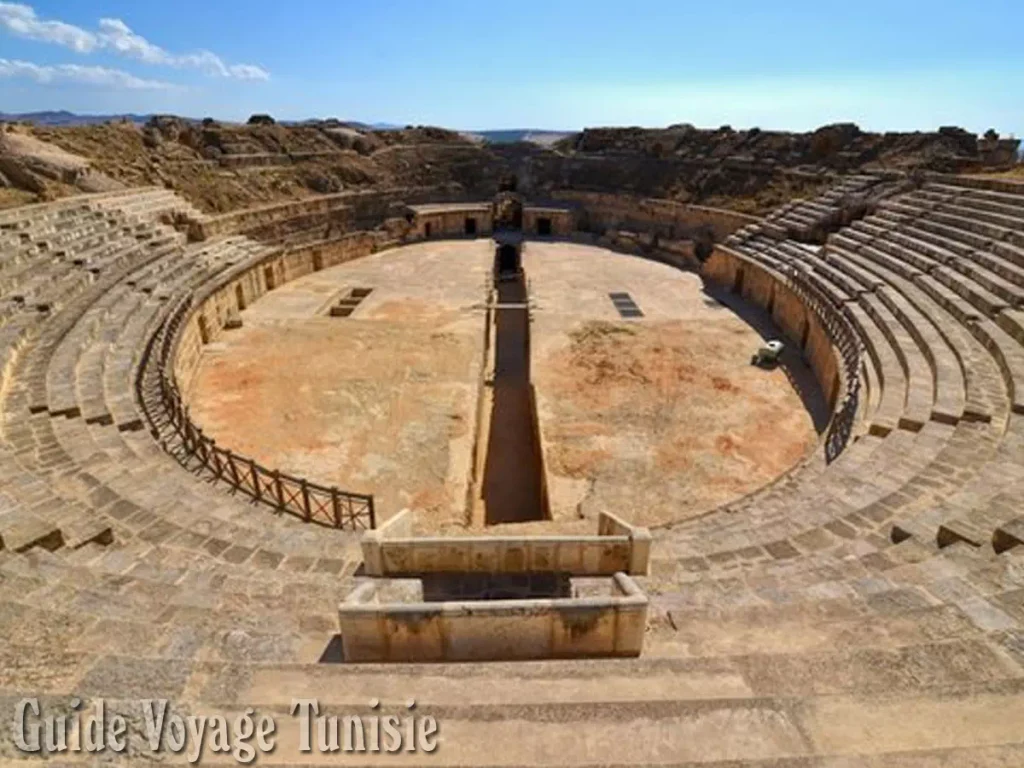Uthina Archaeological Site
The Uthina Archaeological Site (Oudna or Oudhna contemporary name of the ancient Uthina), is a Tunisian archaeological site located thirty kilometers south of Tunis on the road to Zaghouan. Partially excavated in the 19th century, excavations resumed on the site in 1993 to lead to an opening to the public in 1999.
Oudna becomes a colony of veterans of the Legio XIII Gemina during the reign of Emperor Augustus, hence the title of Colonia Iulia Pietas Tertiadecimanorum Uthina which is given to it; it is one of the first colonies on the territory of present-day Tunisia according to Pliny the Elder. It reached its peak during the reign of the dynasty of Antonins and Severes but was ransacked by the soldiers of Capellien in 238 following the revolt of Gordian Ier1. The site was excavated for the first time in the 19th century, thus revealing numerous mosaics, in particular those of a rich villa known as “the Laberii”. A campaign of archaeological excavations resumed in 1993, allowing the site to be opened to visitors in 1999.
Like any Roman city, the site includes an amphitheater, a capitol, baths, cisterns, an aqueduct and dwellings including rich villas.
The Capitol was originally composed of three temples, including the central temple, measuring 43 by 27 meters and dedicated to Jupiter, and two smaller side temples dedicated to Juno and Minerva. The three temples no longer exist and only the columns of the facade of the central temple are preserved. One of the Corinthian-type capitals has been put back in place, giving an idea of the height of the building.
The temple is erected on a very high podium and dominates the city; it is reached by wide staircases on two levels, separated by a landing, each level corresponding to large vaulted rooms arranged under the temple. By its gigantic proportions, the capitol of Oudna is considered one of the greatest temples of Roman Africa.
The elliptical-shaped amphitheater measures 110 by 90 meters, with a central arena of 58 by 35 meters served by an underground gallery aligned with its long axis.
The bleachers, whose lower part is dug into the ground and leaned against the neighboring hill, have a capacity of up to 15,000 spectators. This ranks it third after those of El Jem and Carthage. It was the filming location for the combat scenes in the documentary Gladiators co-produced by the BBC and France Télévisions under the direction of Tilman Remme.
The large public baths dating from the time of Emperor Trajan extend over an area of approximately 6,500 m2. Only the lower part is preserved and corresponds to the cisterns and service rooms; the upper part has a symmetrical layout and houses hot rooms raised on small solid brick pillars, allowing the circulation of hot air (hypocaust); the cold rooms were vaulted and included a basin, on the site of an oil mill where a press plate as well as rooms paved with mosaics were unearthed. The “thermal baths of fishermen’s cupids”, still being excavated, include a frigidarium housing several pools, the largest of which is located in the axis and provided with mosaics, one of which has a Nilotic theme representing cupids fishing with a small boat and nets.
Oudhna in pictures

